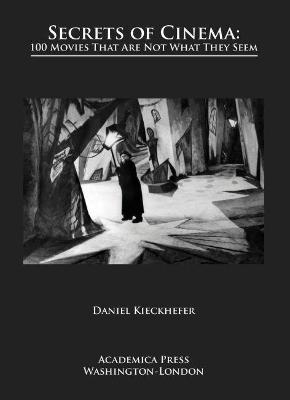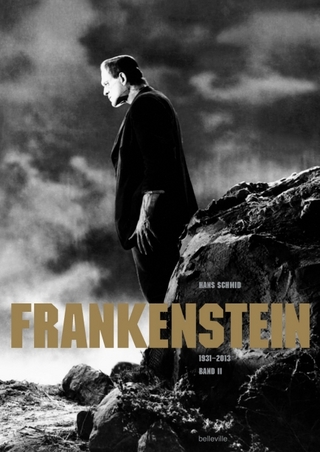
Secrets of Cinema
100 Movies That Are Not What They Seem
Seiten
2019
Academica Press (Verlag)
978-1-68053-490-0 (ISBN)
Academica Press (Verlag)
978-1-68053-490-0 (ISBN)
Examines a spectrum of narrative films that can be seen in new ways with methods derived and evolved from the techniques of Caligari. The intention is not only to offer new interpretations of classic and neglected films, but to open further discussion and exploration.
Ninety-nine years ago, a new form of storytelling emerged from the ruins of World War I. Different in scope and power from theater or literature, and unlike any film that had come before, F. W. Murnau’s The Cabinet of Dr. Caligari addressed a direct challenge to its audience, demanding to be viewed as something other than what was immediately presented. Unfortunately, criticism has not risen to the challenge. Relegating the film condescendingly to the horror genre, or treating it merely as a case study in style, critics have failed to look at it with due seriousness. On the other hand, the film’s ambiguity, structural devices, and psychological depth gave cinema a number of tools that other filmmakers were quick to start using. This book examines a spectrum of narrative films that can be seen in new ways with methods derived and evolved from the techniques of Caligari. The intention is not only to offer new interpretations of classic and neglected films, but to open further discussion and exploration. It is written with optimism that movie lovers will see more in the movies they love, that critics will find new paths of investigation, and that filmmakers will benefit from greater awareness of what movies can do.
Secrets of Cinema began in 1994, in discussions among friends after weekly movie nights hosted by the late Lawrence N. Fox on the 73rd floor of the John Hancock Center in Chicago. The movies selected are not necessarily the greatest ever made (although some of them surely are), but rather movies that offer new and useful lessons in how movies work.
Among the secrets of cinema revealed in this book are at least three movies that are stealth remakes of The Wizard of Oz, hidden meanings behind films made under political repression, and why Hitchcock’s Psycho is a remake of his Vertigo. Persistent enigmas are clarified, including the logic of Persona, the riddle of Last Year at Marienbad, and the endings of Blow-Up and The Shining. More importantly, by showing how much there is to discover in movies, the book encourages its readers to continue in their own ways the quest to see movies whole.
Ninety-nine years ago, a new form of storytelling emerged from the ruins of World War I. Different in scope and power from theater or literature, and unlike any film that had come before, F. W. Murnau’s The Cabinet of Dr. Caligari addressed a direct challenge to its audience, demanding to be viewed as something other than what was immediately presented. Unfortunately, criticism has not risen to the challenge. Relegating the film condescendingly to the horror genre, or treating it merely as a case study in style, critics have failed to look at it with due seriousness. On the other hand, the film’s ambiguity, structural devices, and psychological depth gave cinema a number of tools that other filmmakers were quick to start using. This book examines a spectrum of narrative films that can be seen in new ways with methods derived and evolved from the techniques of Caligari. The intention is not only to offer new interpretations of classic and neglected films, but to open further discussion and exploration. It is written with optimism that movie lovers will see more in the movies they love, that critics will find new paths of investigation, and that filmmakers will benefit from greater awareness of what movies can do.
Secrets of Cinema began in 1994, in discussions among friends after weekly movie nights hosted by the late Lawrence N. Fox on the 73rd floor of the John Hancock Center in Chicago. The movies selected are not necessarily the greatest ever made (although some of them surely are), but rather movies that offer new and useful lessons in how movies work.
Among the secrets of cinema revealed in this book are at least three movies that are stealth remakes of The Wizard of Oz, hidden meanings behind films made under political repression, and why Hitchcock’s Psycho is a remake of his Vertigo. Persistent enigmas are clarified, including the logic of Persona, the riddle of Last Year at Marienbad, and the endings of Blow-Up and The Shining. More importantly, by showing how much there is to discover in movies, the book encourages its readers to continue in their own ways the quest to see movies whole.
| Erscheinungsdatum | 01.04.2019 |
|---|---|
| Verlagsort | Bethesda |
| Sprache | englisch |
| Maße | 152 x 229 mm |
| Themenwelt | Kunst / Musik / Theater ► Film / TV |
| Sozialwissenschaften | |
| ISBN-10 | 1-68053-490-4 / 1680534904 |
| ISBN-13 | 978-1-68053-490-0 / 9781680534900 |
| Zustand | Neuware |
| Haben Sie eine Frage zum Produkt? |
Mehr entdecken
aus dem Bereich
aus dem Bereich
Filmtechnik, Bildgestaltung und emotionale Wirkung
Buch | Hardcover (2024)
Carl Hanser (Verlag)
CHF 62,95


